Posté par Nathalie Desmet, le 30 mars 2014;
- Date limite : 1er juin 2014
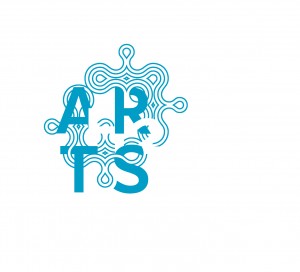 Si la critique moderne a eu tendance à mettre au jour les caractéristiques formelles ou sémantiques des objets ou encore leurs effets sur le spectateur, c’est parce que ces œuvres étaient pensées et perçues comme autosuffisantes. Le refus par nombre d’œuvres contemporaines de se déployer comme des objets finis manifeste un doute à l’égard de cette autosuffisance. Les œuvres n’ont pas d’existence hors contexte. Qui plus est, elles se construisent collectivement à partir de regards multiples, d’activations et d‘interprétations croisées. Quelles sont les incidences de ces bouleversements sur la critique et sur son fonctionnement ? Le colloque a pour intention de développer une réflexion . . . → En lire plus Si la critique moderne a eu tendance à mettre au jour les caractéristiques formelles ou sémantiques des objets ou encore leurs effets sur le spectateur, c’est parce que ces œuvres étaient pensées et perçues comme autosuffisantes. Le refus par nombre d’œuvres contemporaines de se déployer comme des objets finis manifeste un doute à l’égard de cette autosuffisance. Les œuvres n’ont pas d’existence hors contexte. Qui plus est, elles se construisent collectivement à partir de regards multiples, d’activations et d‘interprétations croisées. Quelles sont les incidences de ces bouleversements sur la critique et sur son fonctionnement ? Le colloque a pour intention de développer une réflexion . . . → En lire plus
Posté par Sébastien Bontemps, le 19 mars 2014;
- Date limite : 11 avril 2014
- Date et lieu du colloque : 23-24 mai 2014, Grèce
 The European Way (Athens, 23-24 May 14) The European Way (Athens, 23-24 May 14)
From: Euroacademia <office@euroacademia.eu> Date: Mar 15, 2014 Subject: CFP: The European Way (Athens, 23-24 May 14)
Athens, Greece, May 23 – 24, 2014 Deadline: Apr 11, 2014
Lien vers le site web Call for Papers for the Panel: The European Way – Identitarian Representations of Europe in Visual Arts, Performing Arts and Literature
(As part of The 4th Euroacademia Global Conference ‘Europe Inside-Out: Europe and Europeaness Exposed to Plural Observers’,
Athens, Greece, 23-24 May 2014)
In contemporary Europe some of the main indicators of the lack of a unitary identity come from the deficit of symbols,
images, artistic representations or literary writings that would pin-point towards a unity of sensibility and of . . . → En lire plus
Posté par Sébastien Bontemps, le 18 mars 2014;
- Date limite : 15 avril 2014
- Date et lieu : 6-8 novembre 2014, Södertörn University, Stockholm
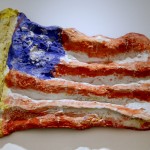 Art in Transfer (Stockholm, 6-8 Nov 14) Södertörn University, Stockholm, November 6 – 08, 2014 Deadline: Apr 15, 2014 Art in Transfer: Curatorial practices and transnational strategies in the Era of Pop Conference The conference Art in Transfer. Curatorial Practices and Transnational Strategies in the Era of Pop, takes place at Södertörn University Campus and Moderna Museet, Stockholm, November 6-8, 2014. Organizers are the department of Art history together with the Centre for Baltic and East European Studies at Södertörn University. The conference is generously supported by the Terra Foundation for American Art. Art in Transfer proposes to take a new look at exchange practices in the long 1960s – a decade stretching back to the 1950s and forth into . . . → En lire plus Art in Transfer (Stockholm, 6-8 Nov 14) Södertörn University, Stockholm, November 6 – 08, 2014 Deadline: Apr 15, 2014 Art in Transfer: Curatorial practices and transnational strategies in the Era of Pop Conference The conference Art in Transfer. Curatorial Practices and Transnational Strategies in the Era of Pop, takes place at Södertörn University Campus and Moderna Museet, Stockholm, November 6-8, 2014. Organizers are the department of Art history together with the Centre for Baltic and East European Studies at Södertörn University. The conference is generously supported by the Terra Foundation for American Art. Art in Transfer proposes to take a new look at exchange practices in the long 1960s – a decade stretching back to the 1950s and forth into . . . → En lire plus
Posté par Sébastien Bontemps, le 13 mars 2014;
- Date limite : 31 mai 2014
- Date et lieu du colloque : 14-16 mai 2015,Montréal
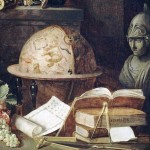 Coping with Copia : Surabondance épistémologique entre art et science dans la première modernité Colloque à Montréal, 14-16 mai 2015 Coping with Copia : Surabondance épistémologique entre art et science dans la première modernité Colloque à Montréal, 14-16 mai 2015
Nous vivons dans une ère de débordement d’informations sans précédent.
Voilà un des lieux communs les plus fréquemment utilisés pour caractériser
ce début du XXIe siècle, à la fois dans le débat universitaire et dans l’imaginaire
collectif. Comme souvent dans le cas des lieux communs, celui-ci comporte une
part de vérité. L’ère d’Internet représente en effet, au moins d’un point de vue quantitatif,
la plus formidable multiplication d’informations disponibles que l’humanité n’ait
jamais vécue. Une grande partie de ces informations prend une forme visuelle :
nous avons à notre disposition toujours plus d’images et de diagrammes
représentant toutes sortes . . . → En lire plus
Posté par Sébastien Bontemps, le 12 mars 2014;
- Date limite : 12 mai 2014
- Date et lieu : 18-19 septembre 2014, Ljubljana, Slovenia
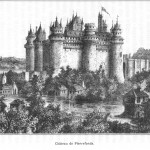 Decline – Metamorphosis – Rebirth (Ljubljana, 18-19 Sep 14) Decline – Metamorphosis – Rebirth (Ljubljana, 18-19 Sep 14)
Ljubljana, Slovenia, September 18 – 19, 2014 Deadline: May 12, 2014
Decline – Metamorphosis – Rebirth International conference for PhD Students
Throughout history mankind has witnessed rises and declines of civilisations, governments and regimes, ideologies
and ideas, cultural movements and artistic creativity. The periods of crisis in social as well as artistic fields are generally
periods of reflection and pursuit of new ways. However, crises often bring about voices that advocate a return to old
values and beliefs. Various connotations may be implied by which in turn leads to different
understandings of the concept. That is why the term itself rarely refers to something revivals of ideas, past
ages and artistic . . . → En lire plus
Posté par Sébastien Bontemps, le 6 mars 2014;
- Date limite : 20 avril 2014
- Date et lieu : 22-25 octobre 2014, University of Barcelona
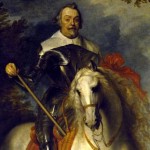 Nationalisms in Art (Barcelona, 22-25 Oct 14) Nationalisms in Art (Barcelona, 22-25 Oct 14)
University of Barcelona, October 22 – 25, 2014 Deadline: Apr 20, 2014
We are pleased to invite you to attend the International Seminar IDENTITY, POWER AND REPRESENTATION: NATIONALISMS IN ART, organized bythe research group ACAF/ART-GEAM Grup d’Estudis d’Art Modern, that will be held from 22 to 25 October 2014 at the University of Barcelona and the Pompeu Fabra University, also located in Barcelona.
The seminar will deal both with power relations in the representations of identity and with the role of proto-nationalisms in the artistic creations of the 15th-18th centuries, without neglecting their situation in the contemporary world.
The art of all times can be understood as a creative tool involving social and . . . → En lire plus
Posté par Sarah Feron, le 24 février 2014;
- Date et lieu du séminaire : Jeudi 13 mars 2014
17h-19h
INHA
Salle Giorgio Vasari
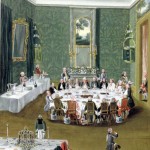 Se nourrir est une nécessité pour les êtres vivants. À cette contrainte biologique les hommes ont étayé un édifice culturel complexe et chargé de sens, la cuisine. Allant du choix et de la mise en œuvre des aliments à leur service à table, la cuisine peut être comprise comme l’interprétation toujours renouvelée d’un besoin naturel inatteignable en tant que tel. Les arts dits « de la table », les arts décoratifs, l’architecture, mais aussi la mode ou la musique jouent dans l’instauration de la cuisine le rôle de cadres – ou de « hors d’oeuvres » venant autour et à côté de la cuisine proprement dite. Secondés par la gastronomie – depuis l’appréciation privée de la qualité des mets et . . . → En lire plus Se nourrir est une nécessité pour les êtres vivants. À cette contrainte biologique les hommes ont étayé un édifice culturel complexe et chargé de sens, la cuisine. Allant du choix et de la mise en œuvre des aliments à leur service à table, la cuisine peut être comprise comme l’interprétation toujours renouvelée d’un besoin naturel inatteignable en tant que tel. Les arts dits « de la table », les arts décoratifs, l’architecture, mais aussi la mode ou la musique jouent dans l’instauration de la cuisine le rôle de cadres – ou de « hors d’oeuvres » venant autour et à côté de la cuisine proprement dite. Secondés par la gastronomie – depuis l’appréciation privée de la qualité des mets et . . . → En lire plus
Posté par Sarah Feron, le 19 février 2014;
- Date et lieu du séminaire : Jeudi 20 mars 2014
15h-17h
INHA
Salle Giorgio Vasari
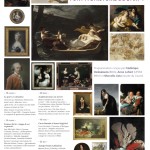 Troisième séance du séminaire « Qu’est-ce que les études de genre font à l’histoire de l’art? » Troisième séance du séminaire « Qu’est-ce que les études de genre font à l’histoire de l’art? »
Marie-Catherine Sahut : « Elle a la fureur du métier ». L’académicienne Anna Dorothea Therbusch vue par Diderot, 1765-1768
Parmi les rares artistes femmes admises à l’Académie royale de Peinture et de Sculpture de Paris au XVIIIe siècle, l’une d’elles, Anna Dorothea Therbusch (1721-1782), est étrangère et se distingue par son audace à peindre l’histoire. Protégée par Denis Diderot, celle qu’il nomme « la Prussienne » s’installe à Paris en 1765. Reçue à l’Académie en 1767, elle bénéficie du droit à exposer ses œuvres au Salon du Louvre et, du même coup, est soumise à la critique. Sous la plume alerte de . . . → En lire plus
Posté par Damien Bril, le 16 février 2014;
- Date et lieu du colloque : 4-5 décembre 2014, Hanovre / 5-6 février 2015, Venise
- Date limite : 15 mars 2014
Music and Entertainment at the Hohes Ufer Festival and Culture Transfer between Hannover and Venice in the Early Modern Period
International and Interdisciplinary Conference
Hannover, Tagungszentrum Schloss Herrenhausen: December 4-5, 2014 and Venice, Deutsches Studienzentrum in Venice: February 5-6, 2015
 In 2014 Hannover will be celebrating the 300th anniversary of the personal union between Hannover and the English Crown 1714-2014. The University of Music, Theatre and Media Hannover, and the Deutsche Studienzentrum in Venice are to mark the occasion by holding an international and interdisciplinary conference entitled In 2014 Hannover will be celebrating the 300th anniversary of the personal union between Hannover and the English Crown 1714-2014. The University of Music, Theatre and Media Hannover, and the Deutsche Studienzentrum in Venice are to mark the occasion by holding an international and interdisciplinary conference entitled
“Music and Entertainment at the Hohes Ufer Festival and Culture Transfer between Hannover and Venice in the Early Modern Period”,
thereby commemorating the . . . → En lire plus
Posté par Damien Bril, le 4 février 2014;
- Date et lieu du colloque : septembre 2014, Vienne
- Date limite : 15 mars 2014
International Conference at the Department for Art History, University of Vienna (Ingeborg Schemper, Julia Rüdiger, Andrea Mayr, Martin Engel) Wednesday, Sep 24 – Friday, Sep 26, 2014 Deadline: Feb 28, 2014
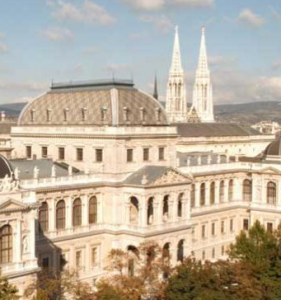 At the occasion of the 650th anniversary of the founding of the University of Vienna in 2015 an international conference at the Department of Art History will focus on scholars’ monuments from an interdisciplinary point of view. Within this scope current research positions in art and cultural history will be presented and reflected in the context of the Arcaded Courtyard at the University of Vienna, one of the largest high quality halls of honour in university context. At the occasion of the 650th anniversary of the founding of the University of Vienna in 2015 an international conference at the Department of Art History will focus on scholars’ monuments from an interdisciplinary point of view. Within this scope current research positions in art and cultural history will be presented and reflected in the context of the Arcaded Courtyard at the University of Vienna, one of the largest high quality halls of honour in university context.
This arcaded courtyard at . . . → En lire plus
Posté par Damien Bril, le 3 février 2014;
- Date et lieu du colloque : 16-19 octobre 2014, La Nouvelle Orléans
- Date limite : 3 mars 2014
SCSC, New Orleans, October 16 – 19, 2014 Deadline-CFP: 3 mars 2014
Call for Papers, Sixteenth Century Society Annual Conference October 16-19, 2014, New Orleans, Louisiana
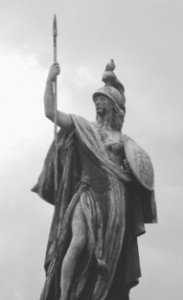 Session: Session:
« Have Art, Will Travel: Mobility and Dislocation in the Early Modern World »
In recent years, a global turn in art history has dissembled the cartographic boundaries that formerly defined the field, opening the discipline to a more nuanced understanding of transregional exchange. As such, this methodological approach has moved us toward a new “geography of art,” to borrow Thomas DaCosta Kaufmann’s term, and emphasizes the theme of mobility in what has become an increasingly globalized discourse of early modernism. Within this . . . → En lire plus
Posté par Damien Bril, le 3 février 2014;
- Date et lieu du colloque : 7-8 mars 2014, Pise
- Date limite : 6 février 2014
Pisa, Italy, March 7 – 08, 2014 Deadline-CFP: 6 févr. 2014
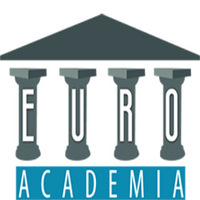 Second Euroacademia International Conference ‘Identities and Identifications: Politicized Uses of Collective Identities’ Second Euroacademia International Conference ‘Identities and Identifications: Politicized Uses of Collective Identities’
Pisa, Italy, 7-8 March 2014
If interested in participating, please send a maximum 300 words abstract together with the details of your affiliation until 6th of February 2014 at application@euroacademia.eu
For full details of the conference and on-line application please see: http://euroacademia.eu/conference/second-identities-and-identifications/
——————————————————————————————————————————————————————————————————————————————— 1. Panel: Identities and the Cities: Urban Transformations, Transition and Change in Urban Image Construction
Panel Organizer: Tihana Puc, IMT Institute for Advanced Studies, Lucca, Italy
Elasticity of the label identity accommodates everything that does and does not surround us, thus finding its . . . → En lire plus
Posté par Damien Bril, le 31 janvier 2014;
- Date et lieu du colloque : 16-19 octobre 2014, La Nouvelle Orléans
- Date limite : 15 mars 2014
New Orleans, LA, October 16 – 19, 2014 Deadline-CFP: 15 mars 2014
CALL FOR PAPERS for a panel at the 2014 Sixteenth-Century Society Conference, convened by Dr Stephanie Porras, Tulane University, and Professor Joanna Woodall, The Courtauld Institute of Art, University of London.
 Translatio. Visual and material culture in translation. Translatio. Visual and material culture in translation.
The Latin translatio means to carry across. Whether conceived as a faithful copy or a dynamic paraphrase, such movement changes the original.
This interdisciplinary panel seeks papers that engage with this concept of translation in the visual and material cultures of the sixteenth century. Theories of translation have traditionally privileged texts, and histories of translation have considered the burgeoning trade . . . → En lire plus
Posté par Olivier Bonfait, le 31 janvier 2014;
 Caroline van Eck : François Lemée et la statue de Louis XIV sur la place des Victoires. Les origines des théories ethnologiques du fétichisme. Paris, Editions de Maison des Sciences de l’Homme/ Centre allemand d’histoire de l’art, 2014. Traduit par Jeanne Bouniort Caroline van Eck : François Lemée et la statue de Louis XIV sur la place des Victoires. Les origines des théories ethnologiques du fétichisme. Paris, Editions de Maison des Sciences de l’Homme/ Centre allemand d’histoire de l’art, 2014. Traduit par Jeanne Bouniort
Suite à la cérémonie d’inauguration de la statue de Louis XIV sur la Place des Victoires à Paris et les accusations d’idolâtrie faites au roi, François Lemée publie en 1688 le Traité des statues, première histoire française de la sculpture. Cette histoire de la sculpture ne traite pas de la question des modèles antiques à imiter par les modernes mais produit une étude de dimensions globales de l’idolâtrie primitive des . . . → En lire plus
Posté par Sarah Feron, le 30 janvier 2014;
- Date et lieu du séminaire : Jeudi 13 février 2014
15h-17h
Salle Giorgio Vasari
2, rue Vivienne
75002 Paris
 Deuxième séance du séminaire « Qu’est-ce que les études de genre font à l’histoire de l’art? » Deuxième séance du séminaire « Qu’est-ce que les études de genre font à l’histoire de l’art? »
Sara Matthews-Grieco : Artistes-femmes italiennes et construction de l’identité de la pittora : Sofonisba Anguissola, Lavinia Fontana, Artemisia Gentileschi
Tandis que dans les couvents médiévaux travaillaient depuis longtemps des artistes compétents dans les media figuratifs – depuis l’enluminure jusqu’à la tapisserie –, la figure de la femme peintre professionnel n’a émergée en Italie qu’au XVIe siècle. Dans cette communication, j’examinerai comment quelques unes de ces artistes femmes se sont servies de leur genre comme d’un atout pour se créer une position dans le monde de l’art contemporain. Une attention particulière sera accordée à l’aristocrate désargentée de Crémone Sofonisba Anguissola, à la dominicaine . . . → En lire plus
Posté par Damien Bril, le 28 janvier 2014;
- Date limite : 1er mars 2014
The Visual Production of Migration. Images, Icons, Codes
 The media coverage and debate of migration and integration is generating a continuous and swiftly growing stream of visual representations. How does migration research respond to this markedly increasing importance and contemplation of the role of images, icons and codes – the visual turn? In 2014, the Institute for Migration Research and Intercultural Studies at the University of Osnabrueck (IMIS, www.imis.uni-osnabrueck.de) devotes a volume of its Journal (IMIS-Beiträge) to the visual aspects of migration debates. From an interdisciplinary perspective, it aims to identify the significance of visual phenomena for societal negotiations over migration. We assume that in interaction with migration phenomena, their visualisation and interpretation, images can yield agency and hence . . . → En lire plus The media coverage and debate of migration and integration is generating a continuous and swiftly growing stream of visual representations. How does migration research respond to this markedly increasing importance and contemplation of the role of images, icons and codes – the visual turn? In 2014, the Institute for Migration Research and Intercultural Studies at the University of Osnabrueck (IMIS, www.imis.uni-osnabrueck.de) devotes a volume of its Journal (IMIS-Beiträge) to the visual aspects of migration debates. From an interdisciplinary perspective, it aims to identify the significance of visual phenomena for societal negotiations over migration. We assume that in interaction with migration phenomena, their visualisation and interpretation, images can yield agency and hence . . . → En lire plus
Posté par Sébastien Bontemps, le 27 janvier 2014;
- Date limite : 16 mars 2014
- Date de prise de fonction : 1er septembre 2014
 PhD Candidate in Art History (University of Amsterdam) Amsterdam, September 1, 2014 – September 1, 2018 Application deadline: Mar 16, 2014 PhD candidate in Art History, University of Amsterdam Salary indication: €2,083 to €2,664 gross per month The Amsterdam Centre of Cultural Heritage and Identity (ACHI) of the Faculty of Humanities is looking for a PhD candidate in Art History as part of the project The Chinese Impact: Images and Ideas of China in the Dutch Golden Age (NWO-Vidi). This project explores the mutual perceptions that resulted from the cultural exchange between China and the Low Countries (Northern and Southern Netherlands) in the seventeenth century. Project description During the first period of intensive contacts between China and Europe, Dutch traders . . . → En lire plus PhD Candidate in Art History (University of Amsterdam) Amsterdam, September 1, 2014 – September 1, 2018 Application deadline: Mar 16, 2014 PhD candidate in Art History, University of Amsterdam Salary indication: €2,083 to €2,664 gross per month The Amsterdam Centre of Cultural Heritage and Identity (ACHI) of the Faculty of Humanities is looking for a PhD candidate in Art History as part of the project The Chinese Impact: Images and Ideas of China in the Dutch Golden Age (NWO-Vidi). This project explores the mutual perceptions that resulted from the cultural exchange between China and the Low Countries (Northern and Southern Netherlands) in the seventeenth century. Project description During the first period of intensive contacts between China and Europe, Dutch traders . . . → En lire plus
Posté par Sarah Feron, le 27 janvier 2014;
- Date et lieu de la rencontre : Jeudi 13 février, 17-19h, Paris, INHA, salle Vasari
 Se nourrir est une nécessité pour les êtres vivants. À cette contrainte biologique les hommes ont étayé un édifice culturel complexe et chargé de sens, la cuisine. Allant du choix et de la mise en œuvre des aliments à leur service à table, la cuisine peut être comprise comme l’interprétation toujours renouvelée d’un besoin naturel inatteignable en tant que tel. Les arts dits « de la table », les arts décoratifs, l’architecture, mais aussi la mode ou la musique jouent dans l’instauration de la cuisine le rôle de cadres – ou de « hors d’oeuvres » venant autour et à côté de la cuisine proprement dite. Secondés par la gastronomie – depuis l’appréciation privée de la qualité des . . . → En lire plus Se nourrir est une nécessité pour les êtres vivants. À cette contrainte biologique les hommes ont étayé un édifice culturel complexe et chargé de sens, la cuisine. Allant du choix et de la mise en œuvre des aliments à leur service à table, la cuisine peut être comprise comme l’interprétation toujours renouvelée d’un besoin naturel inatteignable en tant que tel. Les arts dits « de la table », les arts décoratifs, l’architecture, mais aussi la mode ou la musique jouent dans l’instauration de la cuisine le rôle de cadres – ou de « hors d’oeuvres » venant autour et à côté de la cuisine proprement dite. Secondés par la gastronomie – depuis l’appréciation privée de la qualité des . . . → En lire plus
Posté par Damien Bril, le 2 janvier 2014;
- Date limite : 10 janvier 2014
- Date et lieu du colloque : 11-12 avril 2014, Munich
Moving Body Parts: Their Transcendence of Time and Space in Pre-Modern Europe
Munich, Ludwig-Maximilians-Universität, April 11 – 12, 2014 Deadline-CFP: 10 janv. 2014
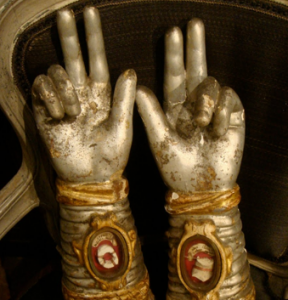 According to Jean-Claude Schmitt, “the dead have no existence other than that which the living imagine for them” – and sometimes, the living not only force them to exist in their memory but also to persist materially. By keeping the mortal remains above the earth, by dividing them, manipulating them and moving them to different places, the deceased are assigned a very active role within the world of the living. The title of this workshop includes, however, also a second “species” of migrating bodily fragments, namely body . . . → En lire plus According to Jean-Claude Schmitt, “the dead have no existence other than that which the living imagine for them” – and sometimes, the living not only force them to exist in their memory but also to persist materially. By keeping the mortal remains above the earth, by dividing them, manipulating them and moving them to different places, the deceased are assigned a very active role within the world of the living. The title of this workshop includes, however, also a second “species” of migrating bodily fragments, namely body . . . → En lire plus
Posté par Sébastien Bontemps, le 11 décembre 2013;
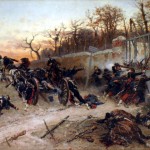 ARTS & SOCIÉTÉS ARTS & SOCIÉTÉS
Prochaine Séance
Pourquoi nous n’aimons plus la guerre
Avec le concours de la Fondation de France
18 décembre 2013 17h-19h, Sciences Po, salle du Traité, 1er étage, 56 rue Jacob -75006 Paris
Il y eut un moment dans l’histoire où la guerre ne fut plus représentée comme lieu de l’héroïsme par excellence mais avant tout dans ses conséquences désastreuses sur les humains, les animaux, les choses. Depuis le tournant des guerres napoléoniennes jusqu’à nos jours, les artistes ont contribué à ce désenchantement et notre exposition future au Louvre à Lens devrait en rendre . . . → En lire plus
|
Équipe Rédacteur en chef : Olivier Bonfait.
Rédacteurs : Elliot Adam (Moyen Age) ; Nicolas Ballet (XX-XXIe siècles) ; Matthieu Fantoni (musées) ; Antonella Fenech Kroke (bourses) ; Vladimir Nestorov (Lettre mensuelle)
Administrateur web : Matthieu Lett.
ancien éditeur : Pascale Dubus
anciens rédacteurs : Gautier Anceau, Sébastien Bontemps, Damien Bril ; Sébastien Chauffour ; Ludovic Jouvet ; Aude Prigot
|
 Si la critique moderne a eu tendance à mettre au jour les caractéristiques formelles ou sémantiques des objets ou encore leurs effets sur le spectateur, c’est parce que ces œuvres étaient pensées et perçues comme autosuffisantes. Le refus par nombre d’œuvres contemporaines de se déployer comme des objets finis manifeste un doute à l’égard de cette autosuffisance. Les œuvres n’ont pas d’existence hors contexte. Qui plus est, elles se construisent collectivement à partir de regards multiples, d’activations et d‘interprétations croisées. Quelles sont les incidences de ces bouleversements sur la critique et sur son fonctionnement ? Le colloque a pour intention de développer une réflexion . . . → En lire plus
Si la critique moderne a eu tendance à mettre au jour les caractéristiques formelles ou sémantiques des objets ou encore leurs effets sur le spectateur, c’est parce que ces œuvres étaient pensées et perçues comme autosuffisantes. Le refus par nombre d’œuvres contemporaines de se déployer comme des objets finis manifeste un doute à l’égard de cette autosuffisance. Les œuvres n’ont pas d’existence hors contexte. Qui plus est, elles se construisent collectivement à partir de regards multiples, d’activations et d‘interprétations croisées. Quelles sont les incidences de ces bouleversements sur la critique et sur son fonctionnement ? Le colloque a pour intention de développer une réflexion . . . → En lire plus


















